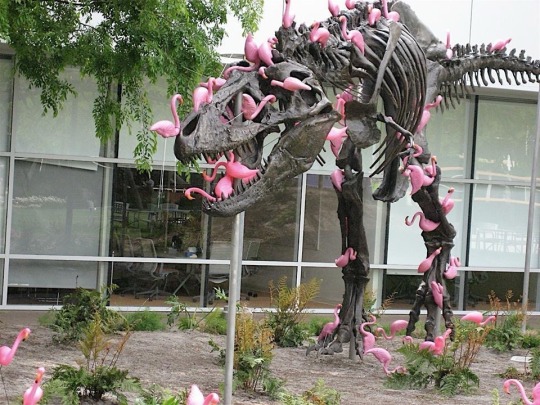#fossil flamingo
Text
Harrisonavis, the French Flamingo
For various reasons I procrastinated wrapping up my Wikipedia work on flamingos (Phoenicopteridae), but I finally had the motivation to finish the final species on my list, Harrisonavis croizeti.
Harrisonavis was a genus of flamingo from the Late Oligocene to Early Miocene of central France ( Saint-Gérand-le-Puy), first described in 1852 as Phoenicopterus croizeti based on a nearly complete skull, a rarity for fossil flamingos which are typically only known from assorted leg material. Although now considered a distinct genus, this early assignment did make sense given that the skull was remarkably similar to modern flamingos of the Phoenicopterus genus.

Alas the skull was lost and since fossil flamingo skulls are so hard to co...hang on they found an upper bill....and two parts of a lower bill...and the upper bill of a juvenile....and a nearly complete cranium. Yeah, turns out Harrisonavis has all the luck its relatives lacked and has gotten several referred specimens preserving the skull material. These fossils show two ironic things.
1) It is very similar to modern flamingos
2) It also differs subtly enough to actually make a difference.
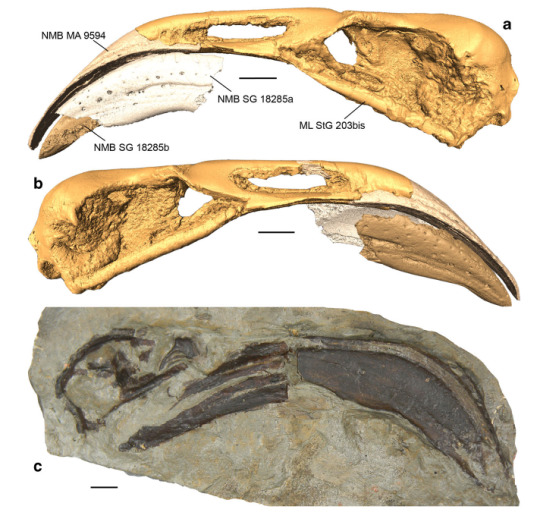
Sounds weird but hear me out. Basically, it already has the needed parts to be a filter feeder, which is pretty obvious since you don't develope this kind of skull just for the hell of it. The bill is curved, the lower side deep to make room for a large tongue and the upper bill has a central keel where the lamellae can attach to (which later filter water). However, the curvature of the bill is rather weak, the lower bill not all that deep and the maxillary keel is shallow. All of this indicates that while already filter feeding, Harrisonavis was not as good at it as modern species. It does show one thing tho. The greater flamingo type skull has been around for approximately 20 million years and seems to represent the ancestral condition, which only later became the bulbous beak seen in the genera Phoenicoparrus (see below) and Phoeniconaias.

As said before, Harrisonavis was found at Saint-Gérand-le-Puy, which seems to represent a complex of lake environments from the Oligocene and Miocene. Far as I've seen, its hypothesized that these lakes underwent cycles of wet and dry conditions, with the dry conditions in particular leading to evaporation, increased salinity and the brackish water favored by flamingos. Harrisonavis wasn't the only flamingo from the region either. Fossils also show the presence of members of the Palaeolidae (perhaps a topic for a future deep dive), specifically Palaelodus ambiguus and Megapaloelodus goliath (maybe Palaelodus goliath?). Illustrations below by @alphynix for Palaeolodus, Scott Reid (@DinosaurDrawing) / Twitter for Megapaloelodus and artbyjrc - Hobbyist, Digital Artist | DeviantArt for Harrisonavis itself.
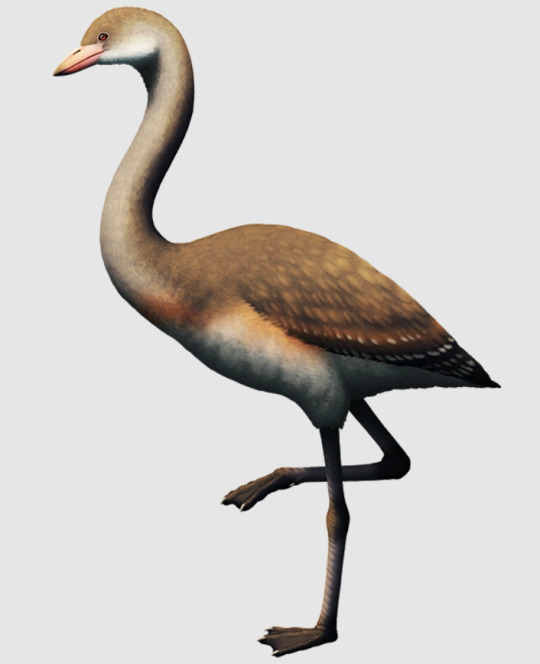
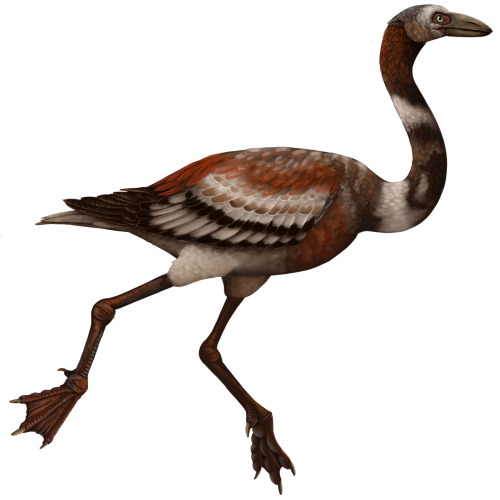

And below you can see the difference between the Wikipedia page as it was originally compared to the new version following my brief dive into the literature, tho I admittedly relied mostly on the comprehensive paper by Torres et al. 2015 that went over the new cranial remains and dealt with the older stuff as well.

#Harrisonavis#flamingo#wikipedia#wikipedia editing#fossil flamingo#phoenicopteridae#miocene#oligocene#fossil birds
18 notes
·
View notes
Text

whenever i can't picture dinosaurs existing i just humble myself by looking at birds alive today. what the actual fuck is that thing
#just look into the eyes of flamingos and you can see the dinosaur#biology#science#stem#sciblr#paleontology#zoology#fossils#prehistoric#dinosaurs#earth science#geoscience#dinosaur#paleoblr#cretaceous#sauropod#geology#prehistoric animals#birds#birdblr
5K notes
·
View notes
Text
Xenobrachyops, a triassic temnospondyl amphibian
Xenorhinos, a cenozoic old world leaf-nosed bat
Xenorhynchopsis, a cenozoic flamingo, the largest known from the fossil record.

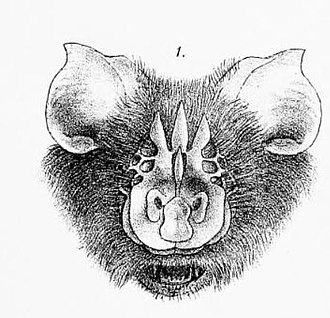

#palaeoblr#australian fossil alphabet thing#megafauna#temnospondyl#flamingo#xenobrachyops#xenorhinos#xenorhynchopsis
37 notes
·
View notes
Text

Agnopterus for day 16 of fossil Novembirb, an early flamingo
24 notes
·
View notes
Text
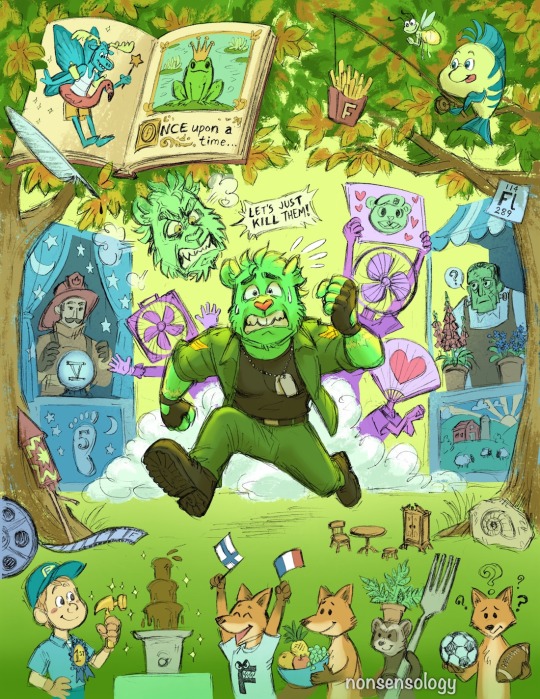
F is for Flippy (and a fuming furious Fliq) frantically fleeing from fanatic fans at a fall forest festival.
While I was feeling nostalgic over favorite childhood books, I was suddenly in the mood to make an alphabet illustration. Here you'll also find "Flounder fishing for French fries" and "Fix-It Felix fixing a fondue fountain for some foxes and a ferret".
I counted over 60 different F words and things represented here (although I could have also missed some). This includes technicalities like "face", "fur", "finger", "fabric", and "fast". Can you spot them all?
F (character from Mike Salcedo series)
fabric
face
fairy
fairy tale
fall (autumn)
fan (device)
fan (person)
fan art
fanatic
fangs
farm
fast
Felix, Fix-It
fern
ferret
festival
film
film reel
fingers
Finland
firefighter
firefly
firework
first (place)
fish
fishing (verb)
fishing pole / fishing rod
five (both Roman and Arabic)
fix(ing)
flag
flamingo
flee(ing)
Flerovium
Flippy
Fliq(py)
floaty
florist
Flounder
flower
fondue
food
foot / feet
football
footprint
footstool
forest
forget-me-not
fork
fortune teller
fossil
fountain
four
fourteen
fox
foxglove
France / French
Frankenstein's monster
frantic(ally)
fries
frog
fruit
fuming
fur
furious
furniture
286 notes
·
View notes
Text
I would love to include more nonavians, truly, I would, but the fossil record doesn't preserve a lot of behavior
596 notes
·
View notes
Text
Fossil Novembirb: Day 1 - The Chosen Ones
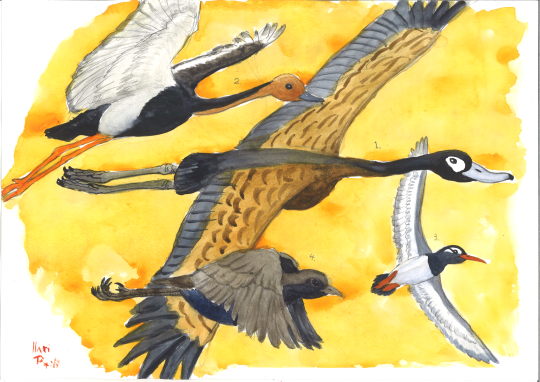
All the dinosaurs died out at the end of the Cretaceous during the K/Pg extinction event 66 million years ago. All of them? No! One group of dinosaurs managed to survive the event and are still around today. Neornithes, or Crown birds. They evolved during the end of the Cretaceous period, and by coincidence, had traits tohelp them survive the cataclysm. Here's a few of these early feathered friends.
Teviornis, a large wading Presbyornithid (flamingo-duck) from Mongolia
"Styginetta", a smaller Presbyornithid (flamingo duck) known from Western North America
Vegavis, a strange, small diving seabird related to ducks and geese, known from Antarctica
Asteriornis, sometimes called the "wonder-chicken", a tiny long legged shorebird related to the common ancestors of ducks and chickens, known from Belgium
#Fossil Novembirb#Novembird#Dinovember#birblr#palaeoblr#birds#dinosaurs#Cenozoic Birds#teviornis#styginetta#vegavis#asteriornis
206 notes
·
View notes
Note
what is a t-rex's closest living relative if not a chicken? i saw that one post of yours about "living fossils" and tried to look it up but i just got more stuff about chickens
Technically all birds are the closest living relatives of dinosaurs, since they're (theropod) dinosaurs to begin with, but you could in a very loose way say that Maniraptora (the group of dinosaurs we call 'raptors', , and all birds) are one sister group of Tyrannosauridea. This is a very simplistic explanation since taxonomists and paleontologists pull their hairs out with regards to these classifications, but here is a handy cladogram:
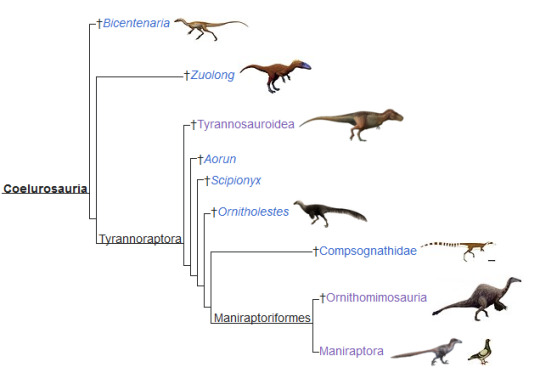
However that does not make a chicken more related to a tyrannosaurus, any more than any other bird like a pelican or an eagle or a flamingo is related to them, since their lineages diverged well before there was any such thing. And especially, this does NOT mean chickens were descended from tyrannosaurs, no matter how many stupid memes there are about it.
10 notes
·
View notes
Text
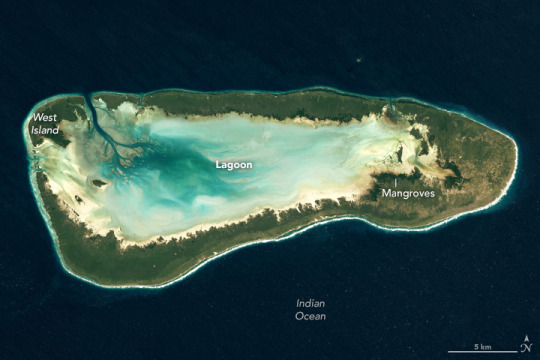
An Outpost for Evolution at Aldabra Atoll
Aldabra Atoll in the Indian Ocean is one of the largest raised coral reefs in the world. This atoll, consisting of coral islands ringing a shallow lagoon, is known for the hundreds of endemic species—including the Aldabra giant tortoise—that live there. According to UNESCO, Aldabra contains “one of the most important natural habitats for studying evolutionary and ecological processes.”
Located more than 400 kilometers (250 miles) northwest of Madagascar and more than 600 kilometers (375 miles) east of mainland Africa, Aldabra is one of the coralline outer islands of the Seychelles. The OLI-2 (Operational Land Imager-2) on Landsat 9 captured this image of the remote atoll on June 24, 2022. Tides flow in and out of the lagoon through channels between the large perimeter islands. The land tops out at a mere 8 meters (26 feet) above sea level.
Due to the islands’ isolated location, rough terrain, and scarcity of fresh water, the human footprint on the atoll is relatively small. A research station on West Island (also called Picard Island) has operated since 1971, but tourism is limited and carefully controlled. Aldabra Atoll was designated a UNESCO World Heritage site in 1982 and a Ramsar site in 2009.
Though the atoll may be remote and rugged, it is not desolate. It contains a variety of habitats that have spurred the evolution of specially suited flora and fauna. The atoll’s varied habitats support many species, including the largest breeding population of frigatebirds in the Indian Ocean and one of only two oceanic flamingo populations in the world.
In one remarkable case, a bird species on Aldabra evolved to be flightless—twice. The islands have been completely underwater at least once in their history when global mean sea level was higher, wiping out all life on the atoll. The fossil record contains evidence of a flightless rail (a bird in the same family as coots and crakes) before the last submergence, and of a flying white-throated rail that evolved to live on the ground after the islands reemerged. With the lack of terrestrial predators and an abundance of food, the bird thrived without the ability to fly.
Seven different types of wetlands, including shallow marine waters and seagrass beds, exist at Aldabra. Mangrove forests line much of the lagoon-facing sides of the large islands. They provide nesting sites for wading birds, as well as feeding grounds for turtles, sharks, and other marine species.

On land, the mostly herbivorous Aldabra giant tortoise (above) sits atop the terrestrial food chain. The population of this social tortoise species is estimated to exceed 100,000. Males can weigh up to 250 kilograms (550 pounds) and measure 1.2 meters (4 feet) in length.
In 2018, a small group of Aldabra giant tortoises was reintroduced to neighboring Madagascar, where no giant tortoises had lived for 600 years due to overhunting. Ecologists believe the lumbering creatures could promote forest regeneration on cattle-grazed land by distributing seeds through their dung. They may also suppress fire risk by feeding on grasses and dry leaves.
NASA Earth Observatory image by Wanmei Liang, using Landsat data from the U.S. Geological Survey. Photograph by Dennis Hansen, University of Zurich. Story by Lindsey Doermann.
3 notes
·
View notes
Text
Palaelodus, the Swimming Flamingo
Another post for fossil flamingos since I just finished the page yesterday.
Palaelodus is a genus of early flamingo relative belonging to the family Palaelodidae, which can be aptly described as swimming or straight-billed flamingos.


Palaelodids are the sister family to Phoenicopterids, the modern flamingos, and already show a bunch of similarities to them like a deeper bill, long legs and neck and saltglands. Other elements meanwhile are more similar to grebes, which are the closest living relatives to flamingos. This has caused some debate on how Palaelodus would have behaved. Early research proposed that they may have been early filter feeders, but a closer look at the bill shows that they lacked some adaptations that hold the keratinous lamellae in flamingo beaks. Consequently, it has since then been suggested that they fed on insect larvae and snails that live in salt lakes, which may have been an early step for phoenicopteriforms to become filter feeders. The next question regards their legs. Early on people suggested they may have been divers, but that simply didn't make sense due to how strangely long they are. Others suggested wading habits, but their feet are strangely stiff. Mayr's hypothesis seems to make the most sense, arguing that they were swimmers, using stiff webbed feet as paddles.
Megapaloelodus goliath (=Palaelodus goliath?) by Scott Reid
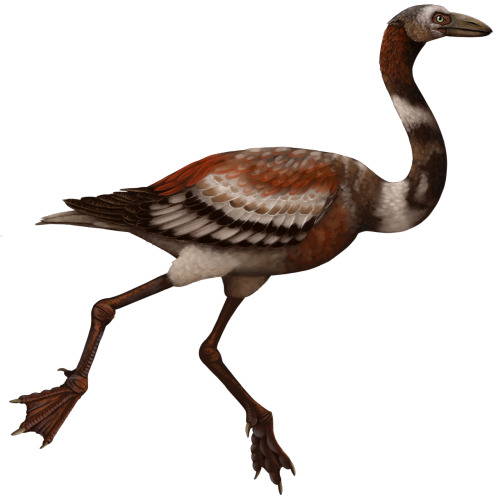
Despite their very different lifestyle, Palaelodus actually had similar habitat preferences to flamingos, inhabiting salty and brackish lakes and having nearly global distribution. The most well known species, Palaelodus ambiguus, Palaelodus gracilipes and Palaelodus crassipes were incredibly common in Oligocene to Miocene Europe, especially France and Germany, the former country having over a thousand bones of them. In France, all three species (which some have suggested is only a single species of varying size) coexisted with the large Megapaloelodus goliath and the true flamingo Harrisonavis.
Images by Alphynix, Ceratops Yuta's Dinosaur Travel Blog and Torres et al. 2015



Outside of Europe, fossils from Brazil are known and tentatively assigned to Palaelodus ambiguus as well. Indetermined palaelodids are known from the early Oligocene of Egypt (Jebel Qatrani Fm), one species named Palaelodus kurochkini stems from Mongolia. Three species are known from Oceania. Palaelodus pledgei and Palaelodus wilsoni are the smallest and largest species respectively, having been found in the Oligocene to Miocene deposits of the Lake Eyre Basin in Australia. A single species, Palaelodus aotearoa, is known from the paleo-Lake Manuherikia in New Zealand, known for its extensive fauna of waterbirds. Much like the European species, the two Australian taxa coexisted with true flamingos, Phoenicopterus novaehollandiae and Phoeniconotius eyrensis.
Palaelodus cf. ambiguus by Felipe Alves Elias, Lake Eyre flamingos by Frank Knight and Palaelodus aetearoa by Tom Simpson

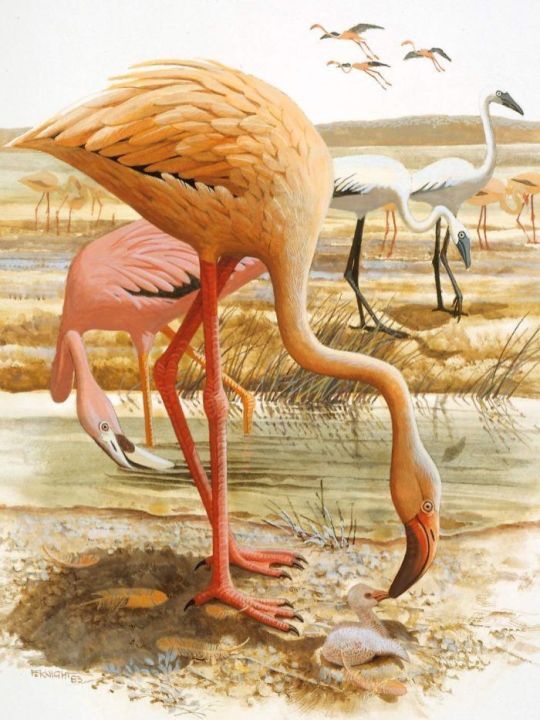
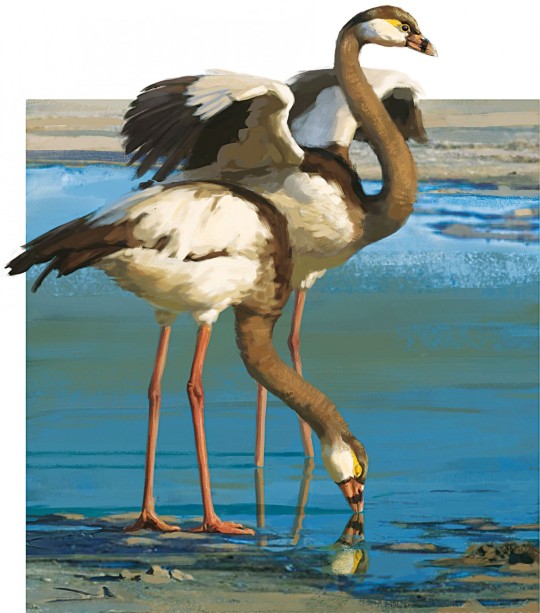
So all things considered, palaelodids and Palaelodus specifically did really well during the Oligocene and Miocene. What happened then is not known as they just disappear from the fossil record, unlike flamingos. Well, mostly disappear from the fossil record. There is one exception. A single isolated bone initially assigned to Palaelodus wilsoni was discovered at Cooper Creek in Australia, indicating an age of no more than 200.000 years. Since then its been suggested that it may not be P. wilsoni or even Palaelodus at all, but from the most recent publication I've seen on it the idea that its a palaelodid is still maintained. I am unsure on this one, as it is a massive gap in the fossil record, but there would be something tragic about it. Assuming that palaelodids survived in Australia, they would have been at home in a place that for a long time was a paradise for flamingos with salt lakes covering whats now the Tirari Desert. And then, during the Pleistocene when Australia got more arid and the lakes dried up, the former diverse flamingo fauna was gone for good, leaving Australia (and Antarctica) the only continents without flamingos, all because of some relatively recent climate change.

As always this is brought to you by me going down a wiki editing rabbit hole, the final result of which can be found here Palaelodus - Wikipedia. That article has all sources and information and then some more stuff that I didn't go in here (like the history and some anatomical lingo) Chances are that Megapaloelodus will be next, at which point I'll have written the pages for all fossil phoenicopterids and palaelodids.
#Palaelodus#Palaelodidae#Flamingos#Phoenicopteridae#fossils#flamingo#wikipedia#wikipedia editing#Palaelodus ambiguus#paleontology#palaeblr#long post
273 notes
·
View notes
Text


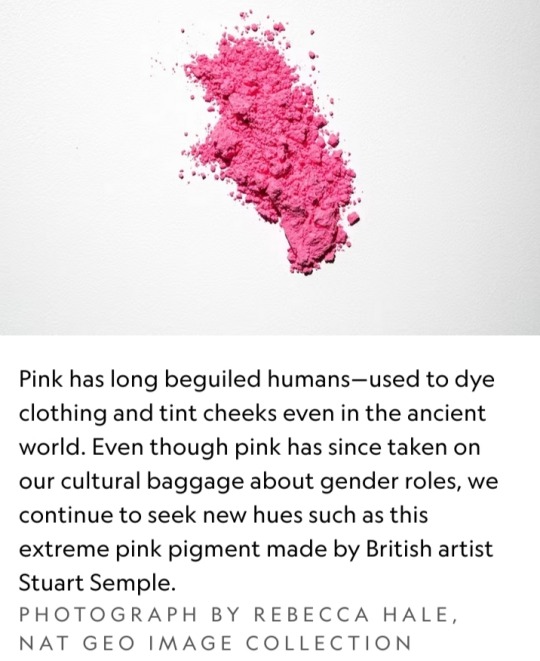
Could pink be Earth’s oldest color? That’s the implication of a 2018 study that found bright-pink pigments in 1.1 billion-year-old rocks — thanks to the fossils of the billions of tiny cyanobacteria that once dominated oceans.
The natural world has long been painted with every permutation of pink — whether embedded deep in ancient rock, sported by shrimp-hungry flamingoes, or simply lining the shores of Bermuda’s pink-sand beaches.
And yet the color carries a lot of cultural baggage.
As pink made the jump from nature’s palette to human adornment, it gathered connotations of colonialism, beauty, power, and gender.
How did pink become such a cultural flashpoint? As the world takes a revitalized interest in the hot-pink planet inhabited by Barbie, here’s a short history of the compelling color.
Admiration for pink in the ancient world
Early humans quickly transitioned from admiring pink in the natural world to attempting to wear it.
For example, in the Andes Mountains about 9,000 years ago, fierce hunters in what is now Peru wore tailored leather clothing with a pink hue thanks to red ochre, an iron oxide pigment that is one of the oldest natural pigments used by humans.
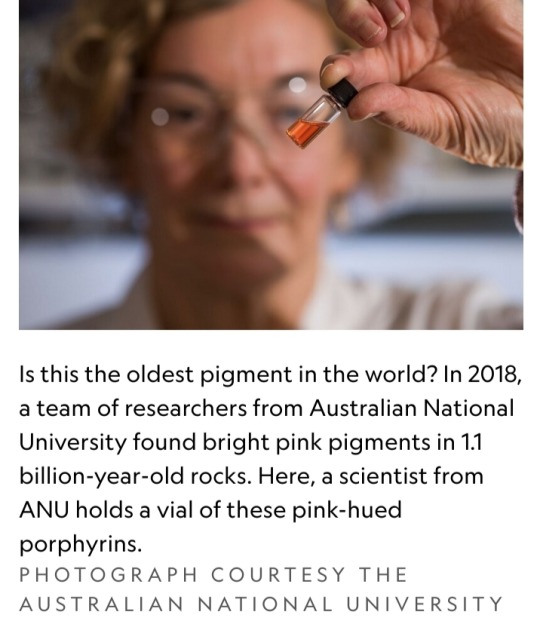
Humans weren’t content just to smear this pigment on cave walls or use it while tanning their leather garments.
As far back as ancient Egypt, humans used ochre to tint their lips and cheeks.
When applied to human skin, the red pigment created a blush-like pink that onlookers associated with love, sexuality, and beauty.
Lookalike concoctions prevailed around the world, employing everything from crushed strawberries to red amaranth.
The color of cosmetics—and colonialism
Though the word’s etymology is unknown, the word “pink” was used to describe the color in the 18th century.
By then, pink had become inextricably tied with colonialism — as demand for the pigment for cosmetics drove Europeans to harvest natural resources in other parts of the world.
For example, in a bid to make pinkish pigments from the bark and red sap of brazilwood trees, European traders forced enslaved workers to cut down so many of Brazil’s eponymous trees that the country was left deforested and the tree nearly driven extinct.
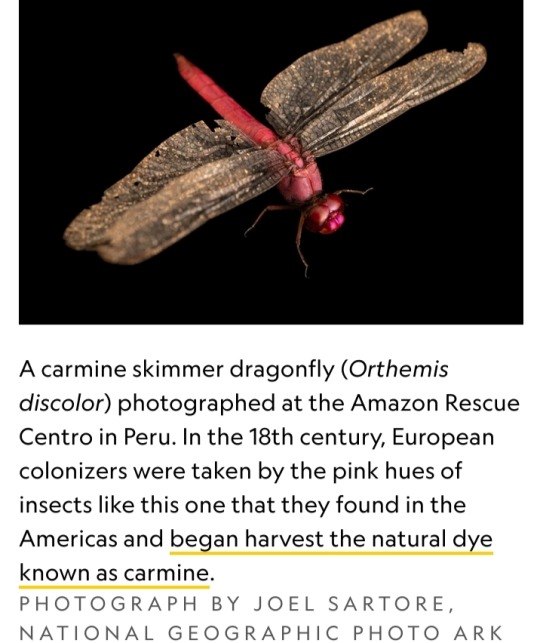
During this Era of Exploration, consumers also got their pink cheeks and lips from other pigments like carmine, derived from cochineal insects harvested in Central and South America under similar conditions.
Meanwhile, the color also had a more literal association with colonialism:
During this time, the British Empire grew so massive that the color pink — which mapmakers used to mark its territories worldwide — dominated the world map.
Pink becomes a bona fide fashion craze
As red tints became more accessible and cheaper, 18th-century European aristocrats indulged a passion for pink.
Art historian Michel Pastoureau writes that “the most privileged classes of European society wanted pastels, halftones, and the newest innovations in color shades in order to distinguish themselves from the middle classes, who now had access to bright, strong, and reliable colors.”
Madame de Pompadour, the mistress of Louis XV of France during the 1740s and 1750s, used the color as a signature.
The artists who painted her and created fine objects for her many homes used pink in all their designs, even her carriages, and she helped further popularize the hue throughout Europe.
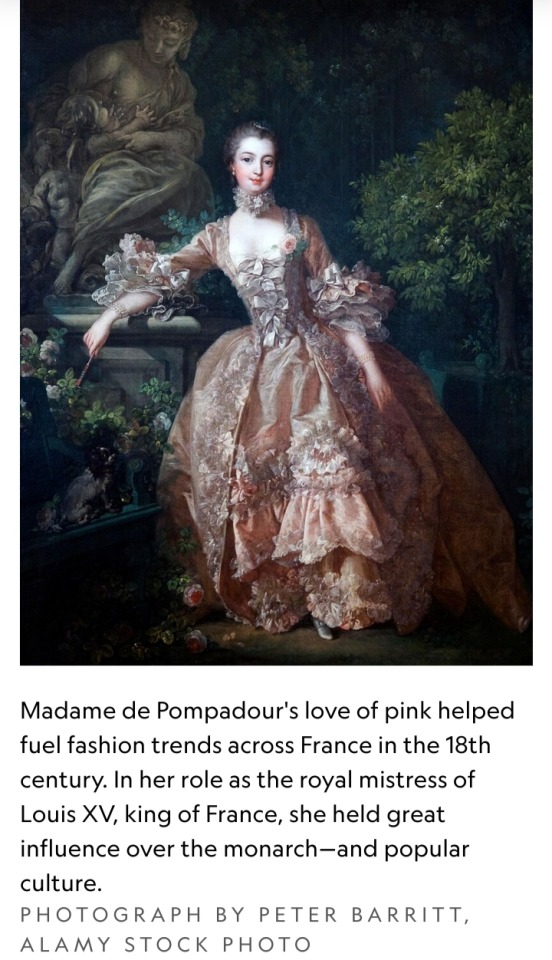
The emergence of synthetic dyes in the mid-19th century — which gave rise to the purple-pink color known as mauve — made pink more accessible than ever before.
By the 1930s, bright pink had become a bona fide fashion craze.
Avant-garde fashion designer Elsa Schiaparelli made “shocking pink” her signature color, helping spread the vogue for women’s wear.
It worked: By 1935, even local newspapers like the News and Observer in Raleigh, North Carolina, were declaring that “PINK IS FAVORITE.”
And in 1939, a royal commentator wrote in London’s Daily Telegraph that pink was so popular, it was nearly ubiquitous for both bridesmaids and debutantes.
“So general is the pink craze,” the paper wrote, “that some women are rebelling against it.”
Pink is for…boys?
Around the same time, pink gained relevance in another realm: baby fashion.
Gender and baby fashion had intersected for years; around World War I, etiquette guides and fashion advice columns began advising that mothers dress their children in clothing with gender-specific hues.
But which colors? A 1927 retailer survey on infant clothing colors published in TIME shows a split nation, with retailers like Filene’s and Marshall Field’s recommending pink for boys, but Macy’s, Bullock’s, and others claiming pink was best for girls.
By the 1960s, however, mothers began buying pink clothing for their female babies, dressing their male children in pastel blues.
“None of this transition happened by childcare expert fiat or industry proclamation,” writes historian Jo B. Paoletti.
Instead, pink gained steam as a signifier of a baby’s female sex as part of a post-World War II push to reinforce traditional gender roles in American homes — and the realization by retailers that they could make more money that way.

“The more baby clothing could be designed for an individual child — and sex was the easiest and most obvious way to distinguish babies — the harder it would be for parents to hand down clothing from one child to the next, and the more clothing they would have to buy as their family grew,” Paoletti writes.
Soon, retailers featured entire “pink aisles” packed with pink-colored clothing and toys for tiny consumers.
The dark side of pink
Pink was also rejected by some as a symbol of weakness or even sinister intent.
In Nazi Germany, for example, the color was used to brand gay men in concentration and death camps.
As the Cold War emerged, suspected Communist sympathizers were given the derogatory name of “pinkos” — a term that referred to a person with “red” tendencies toward radical politics.
Meanwhile, members of the women’s liberation movement attempted to distance themselves from a color that had become inextricably linked with femininity and sexuality — think: Marilyn Monroe slinking down a staircase in a shocking pink gown, surrounded by tuxedoed men.
Anti-feminists, meanwhile, embraced pink.
Author Helen B. Andelin, for example, made public appearances in all-pink ensembles in the 1960s and 1970s during lectures encouraging women to abandon feminism and embrace lives as housewives.
Reclaiming pink
Pink remains associated with femininity to this day — but in recent decades, groups once disdainfully branded with the color have made moves to reclaim it.
In the LGBTQ community, for example, people who were once forced to wear pink as outcasts have adopted the hue as a symbol of their movement for social justice.
In 1987, the AIDS Coalition to Unleash Power (ACT UP) adopted a bubble-gum pink triangle in its “Silence = Death” campaign to increase awareness of HIV-AIDS and destigmatize the disease.
It was just one example of pink being used to represent gay pride.
Some feminists have also reclaimed the color, fighting gender stereotypes with a tongue-in-cheek adoption of all shades of rose, fuchsia, and bubble-gum pink.
At the 2017 Women’s March, for example, a sea of protesters wearing pink, cat-eared “pussy hats” protested the inauguration of U.S. President Donald Trump, whose lewd remarks about female genitalia during a leaked interview drew worldwide condemnation.
Today, pink is what you make of it — and it has grown in popularity once more.
In 2016, Pantone announced that a shade of dusty pink — dubbed Millennial Pink for the generation that had embraced it—was its Color of the Year.

This year, Greta Gerwig’s upcoming Barbie movie helped fuel the rise of the pink-drenched “Barbiecore” aesthetic, inspiring admirers to saturate their homes and wardrobes with every shade of pink.
According to Axios, searches for the term “Barbiecore aesthetic room” rose over 1,000 percent between May 2022 and May 2023, reflecting consumers’ craving for as-pink-as-possible interiors.
There’s no telling which permutation of pink will captivate us next — but given the colorful history of the hues that fall somewhere between white and red, pink’s next heyday is probably right around the corner.

Barbie would approve of the pink petals on this beach morning glory.
Pink flowers like this one get their rosy tinge from a group of biological pigments called anthocyanins, which attract pollinators — and human admirers — to colors ranging from the palest carnation to the most ostentatious tropical fuchsia.
#pink#red ochre#carmine#Era of Exploration#Madame de Pompadour#Louis XV of France#mauve#Elsa Schiaparelli#gender#baby fashion#colors#Helen B. Andelin#AIDS Coalition to Unleash Power (ACT UP)#Pantone#Millennial Pink#Barbie#Nat Geo#fashion#political movement#Marilyn Monroe#Zsa Zsa Gabor#pigment
10 notes
·
View notes
Text
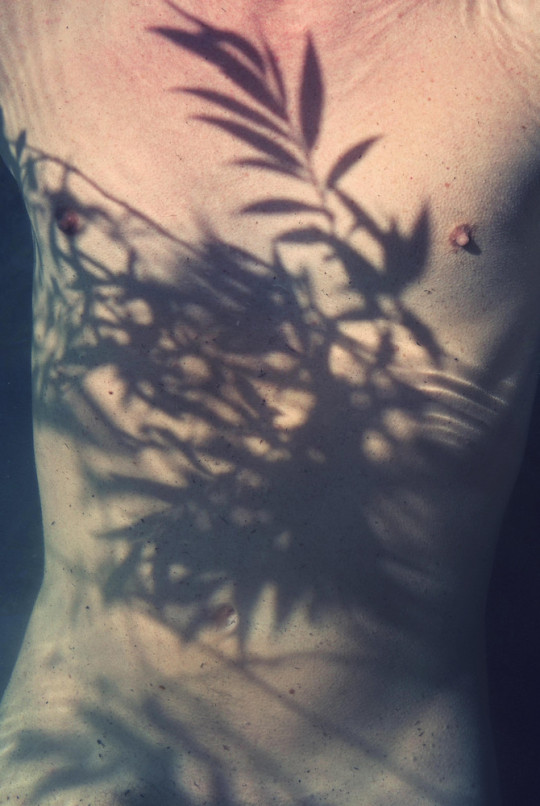
Torso. man torso with shadows, par Ayline Olukman
Série Our wild lives
Ayline Olukman composes her photographs with the rigor of a classical painter. In her studio, she stages bodies and still lifes. Outdoors, she builds landscapes like scenery. A staircase down to the sea awaits her extras. Time stops, splendor erodes. Further, a group of parrots freeze forever, lost in the artificial glow of a diorama. A flamingo spreads its wings and turns into a chimera. A man sinks for eternity into a forest lost in the fog. Plants dry up and fossilize. Ethereal hues paint a fantasy world, a strange and impenetrable dream. The artist gives us a fragmentary, naturalistic and sensual story.
5 notes
·
View notes
Note
colorgenders inspired by the results of a “What is your Aura” quiz ((https://)uquiz(.)com/quiz/pxTx2D/what-color-is-your-aura):
Sky: short poems, teacups, clear skies, diaries, dripping icicles, tears, tennis shoes.
Honeysuckle: succulents, key lime, glow-in-the-dark stars, blown glass, honeydew, garter snakes, notes in bottles.
Seafoam: clear water, milkshakes, crystals, agave, candy dishes, converse, seashells.
Yellow: daisies, road signs, bumblebees, lemon meringue, bicycles, polaroids, awnings.
Hickory: felled oak, brass, sunken ships, olive pits, graphic shirts, splinters, dark room.
Orange: guitars, fanta bottles, sunglasses, orange peels, butterflies, popsicles, paper lanterns.
Sage: herb clippings, matcha, bullet journals, mini backpacks, needle felts, pistachio, laptop stickers.
Teal: dyed hair, scales, doc martens, aurora borealis, stormy seas, kingfishers, agate.
Royal (blue): crown jewels, portraits, satin chairs, masquerades, nebulas, betta fish, secrets.
Gold: lion statues, coins, gold leafing, bound books, goldfinches, crowns, heart lockets.
Crimson: rose vines, blood, apples, velvet, sharp nails, galaxies, dripping jewellery.
Navy: brush strokes, suit jackets, midnight, comforters, star gazing, arctic waters, starlings.
Forest: fern leaves, greenhouses, cloaks, bookstores, pine trees, chokers, snake scales.
honey: friendship bracelets, beehives, school buses, children's books, flower petals, honeyed toast, polaroids.
Ashen: old newspapers, smoke, quiet cities, pale cheeks, pebbles, chalk, the clouded moon.
Garnet: Brooches, anthologies, stained glass, leaves, dining chairs, long robes, curtains.
Chiffon: stone walls, sweaters, moths, dusty lace, animal tracks, incense, throw pillows.
Red: leather jackets, cherries, bruised knuckles, roses, lipstick, fast cars, rose petals.
Magenta: splattered paint, glitter, childhood friends, neon, pleather, dance floors, crystals.
Amaranth: bundled flowers, ribbon, merlot, overcoats, gemstones, lipstick prints, red velvet.
Periwinkle: knit hats, candies, tiny flowers, beads, teacups, washi tape, clouds.
Jade: islands, sketchbooks, rainy windows, pendants, puzzle pieces, tree frogs, sea glass.
Pink: cupcakes, sunglasses, pink sands, starbursts, pinky promises, flower crowns, ice cream.
Rose: lace, blown kisses, milk tea, paper fans, pillows, ballet slippers, fairy wings.
Amethyst: earrings, violet corts, parades, gemstones, insect wings, grape bushels, outer space.
Noir: drops of ink, eyeliner, crows, spiders, charcoal, painted nails, the night.
Cream: dandelions, marble, bottled coffee, hair ties, banana cream, bedsheets, sketches.
Beige: lattes, dry fields, footprints, easels, cat fur, pottery, fresh-baked cookies.
Pearl: abalone, perfume bottles, chandeliers, tulle, ball jointed dolls, satin, paint palettes.
Bronze: leather books, cowboy hats, foxes, candle jars, sword hilts, cobblestone streets, hourglasses
Amber: autumn days, freckles, torches, cabins, fossils, unbrushed hair, enamel pins.
Fire: sunrises, woven blankets, campfires, tigers, whiskey, monarchs, road trips.
Purple: geodes, club lights, ferris wheels, sunglasses, hummingbirds, eyeshadow, outer space.
Blush: lollipops, warm cheeks, lip gloss, flowers, flamingo feathers, painted nails, heart glasses.
finally done with all of these — they're queued!
6 notes
·
View notes
Text
Anthro Allies Remastered (Part 2)
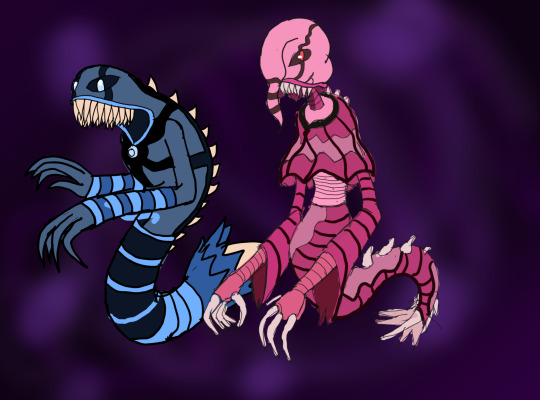
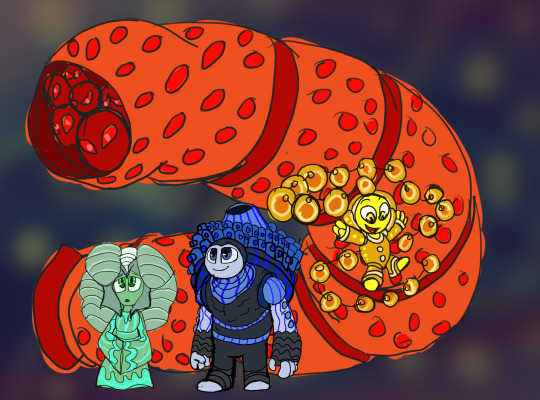


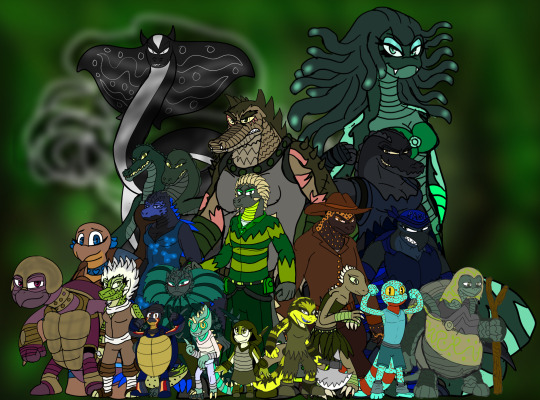
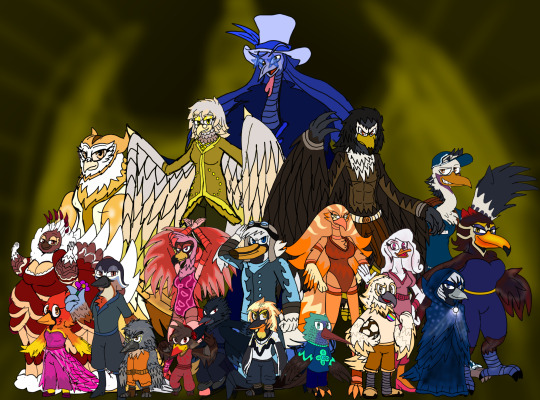
now for the first vertebrates before us mammals
Cephalochordate
Wyn (Lancelet)
Oxi (Amphioxi)
Tunicate
Hydrant (Sea Squirt)
Vagile (Larvacea)
Fen (Salps)
Sub-Flame (Pyrosome)
Fish
Lagoona (Eel/Fish Hybrid)
Josiah (Hagfish/Lamprey)
Chomps (Piranha)
Fugu (Pufferfish)
Mikayla (Mermaid hybrid)
Whirlpool (Merman hybrid)
Fossil (Coelacanth/Lungfish)
Sea Shocker (Ray Hybrid)
Ichi (Chimera fish)
Thatcher (Shark Hybrid)
Amphibians
Pads (Common frog/Bullfrog/Goliath frog)/Mutant
Zookie (Poison dart frog)
Balzo (Tree frog)
Mangrove (Horned Bullfrog)
Croaker (Toad Hybrid)
Daisy (Caecilian)
Poly (Rubber Eel)
Rigid (Newt)
Axanthic (Salamander/Axolotl)
Echo (Siren/Olm/Amphiuma)
Reptiles
Veo (Komodo Dragon/Monitor Lizard)
Ivy (Sand Lizard)
Clyde/Pygment (Chameleon)
Viridian (Skink)
Rancor (Gila Monster)
Anahera (Tuatara)
Takeo (Gecko)
Nori (Iguana/Marine iguana)
Draco (Dragon Lizard)
Chole (Softshell/Terrapin)
Beckett (Box/Pond Turtle)
Rave (Snapping Turtle)
Mechel (Big headed Turtle)
Flyta (Sea Turtle)
Bartolomeo (Tortoise)
Lu-Hyen (Caiman/Gharial)
K.Roc (Crocodilian)
Roxy (Alligator)
Herik (Viper/Cobra)
Neveah (Constrictor/Serpent)
Birds
Nimbious (Bird of Prey)
Maverick (Bird of Prey)
Felifa (Owl)
Jaxon (Sea Bird)
Valentina (Serima)
Stalks (Stork/Crane/Shoebill/Heron)
Terpsicore (Flamingo)
William (Paleognath)
Harper (Game fowl)
Martin/Frozan (Penguin)
Mallie (Water fowl)
Loco (Cuckoo)
Evelin/Evening (Corvid)
Colors (Parrot)
Rumba (Cardinal/Canary/Tanager)
Sonnet (Song Bird Hybrid)
Yashi (Woodpecker/Toucan)
Recorder (Drongo)
Tiffany (Oxpecker)
Zennon (Hummingbird)
Previous/Next
(For More Information About The Earthdemons, Neo demons, The Anthro allies , the O'Kong family and more of theses characters as well as updates please visit the @the-earthdemon-hub for more)
#my ocs#my art#elementalgod aj#aj the elementalgod#isle o#toonverse oc#The Watchful Eye#Watchful Eye#O'Kong family#Earthdemons#Neo Demons#Anthro Allies#birds#reptiles#fish#amphibians#Tunicates#Cephalochordate
2 notes
·
View notes
